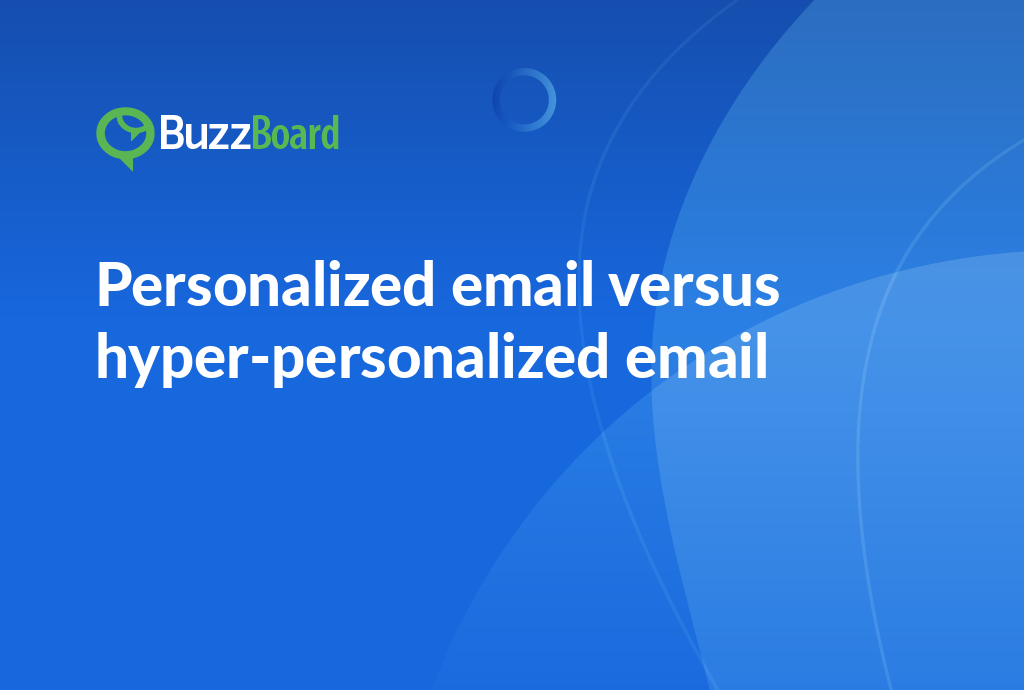Storytelling to Connect
Effective storytelling is a powerful way to connect with customers on a personal level. By crafting a narrative that resonates with your audience, you can build trust, foster loyalty, and drive business results. In this article, learn the art of storytelling and discover how to use storytelling techniques to create an emotional connection with your customers, increase brand awareness, and drive customer engagement. From understanding your target audience to crafting a compelling narrative, get the tips and strategies you need to tell a story that resonates with your customers and sets your brand apart.
Connect With Local Customers Through Storytelling
Storytelling transcends mere narration; it’s a fundamental part of establishing meaningful relationships with people or, in this context, customers. Powerful storytelling can captivate minds and prompt action, a powerful digital marketing tool. One method to apply this is by connecting with local customers, a crucial step in creating a robust, loyal customer base.
As a salesperson at a digital marketing agency, you can harness storytelling’s power to personalize websites, amplifying the user experience and fostering deeper ties with local clients. When personalized, websites portray an image mirroring the customer’s unique needs, objectives, and challenges. Essentially, personalization lays the foundation for an engaging story, mirroring a customer’s individual journey.
Additionally, customizing the customer experience bolsters this connection, demonstrating that you understand and value their needs, striving to fulfill them. An exceptional user experience becomes your story’s plot, the experience that entices customers to return to your website, engage with your brand, and eventually become long-standing, trusted clients.
Remember, your narrative should resonate with your customers. By using storytelling to connect with local customers, you can shape their perception and motivate them to take action. So, start personalizing your websites, storytelling, and customer experience now for stronger ties with local customers.
Exploring How to Personalize Websites to Better Connect With Local Customers
Digital marketers have the potential to boost their client’s online success by tailoring websites for local customers. Take it from Forbes, which reports that “”70% of customers feel more connected to businesses that personalize their user experience and website content.”” In an era when a plethora of transactions occur virtually, establishing such connections is vital.
Small businesses specifically stand to gain much from drawing in local customers to drive sales. Personalizing the customer experience entails comprehending and leveraging data garnered from customer behavior, preferences, and demographics. This information plays a pivotal role in guiding website updates like incorporating local lingo, highlighting local events, or featuring local testimonials.
You may wonder, how can websites be personalized to resonate more with local customers? Here are some strategies to consider:
In conclusion, a personalized customer experience is crucial to small businesses aiming to connect with local customers. However, it’s important to understand that personalization isn’t a one-off process. It necessitates ongoing testing, feedback, and adjustment.
The Benefits and Challenges of Personalizing the Customer Experience
Many companies today recognize the importance of connecting with local customers and providing a personalized experience to drive loyalty and sales. However, personalizing the customer experience can be a significant challenge and potential advantage, requiring a deep understanding of the benefits and difficulties involved.
One of the key benefits of personalizing the customer experience is the potential to improve user experience and increase conversions. According to an Epsilon survey, a staggering 80% of customers are more likely to buy from a brand that offers personalized experiences. This is because customization can take many forms, from product recommendations based on past purchases to personalized greeting messages, catering to individual tastes and making customers feel appreciated. For example, a clothing retailer could use data to recommend products that a customer has previously shown interest in, or a restaurant could use customer data to offer personalized menu recommendations.
However, personalizing the customer experience is not without its challenges. It requires extensive data collection, analysis, and interpretation to ensure precise customization. This can be a daunting task, especially for small businesses with limited resources. Moreover, the risk of privacy intrusion and data breaches is considerable due to the sensitive information involved. Failing to strike a balance between personalization and data protection can lead customers to pull away from your brand, damaging your reputation and potentially losing valuable customers.
Small businesses, in particular, may struggle to implement personalization effectively due to limited resources. They may lack the necessary infrastructure, technology, and expertise to collect, analyze, and interpret large amounts of customer data. This can lead to unsuccessful personalization attempts that cause more harm than good, potentially alienating customers and damaging the brand.
Therefore, salespeople pitching personalization solutions to small businesses must articulate the value proposition persuasively. They should reassure prospective clients that the investment in personalization will yield significant returns despite the initial challenges. This may involve highlighting the benefits of personalization, such as increased customer loyalty, improved customer retention, and enhanced customer satisfaction. Salespeople should also emphasize the importance of data protection and the measures that can be taken to ensure customer data is secure and private.
Ultimately, personalizing the customer experience requires a thoughtful and strategic approach that balances the benefits of customization with the risks of data collection and protection. By understanding the challenges and difficulties involved, companies can develop effective personalization strategies that drive loyalty, sales, and customer satisfaction.
How User Experience Impacts the Ability to Connect With Customers on a Personal Level
The significance of a well-designed website with exceptional user experience (UX) cannot be overstated, particularly when interacting with local clientele. Research by Proto.io highlights the stark reality that over 88% of online shoppers will not revisit a website after experiencing poor UX. This alarming statistic underscores the critical role of UX in crafting websites that cater to the unique needs and preferences of individual consumers.
A well-designed UX strategy is essential for personalizing the consumer experience, simplifying the process of connecting with local customers, and ultimately driving business success. By implementing a strong UX approach, businesses can create a seamless and intuitive online environment that aligns content with a customer’s preferences, search history, and behavior. This tailored approach streamlines the browsing process, making it easier for customers to find what they’re looking for and increasing the likelihood of conversion.
Moreover, a well-tailored website makes customers feel valued, fostering both familiarity and trust in your brand. When customers feel understood and catered to, they are more likely to return to your website, recommend your brand to others, and become loyal advocates. This, in turn, can lead to increased customer retention rates, positive word-of-mouth, and ultimately, improved sales performance.
UX’s direct influence on customer satisfaction and online behavior has a profound impact on sales and customer retention rates. By deciphering the client’s buying journey, from the awareness stage to the decision phase, businesses can fabricate a compelling UX that not only bolsters sales performance but also fortifies customer relationships. This involves understanding the customer’s pain points, preferences, and behaviors, and using this insight to design a website that meets their needs and exceeds their expectations.
A well-designed UX can also help businesses to:
- Reduce bounce rates and increase dwell time, as customers are more likely to engage with a website that is easy to navigate and provides a seamless experience.
- Increase conversions, as customers are more likely to complete a purchase or take a desired action when the process is streamlined and intuitive.
- Improve customer loyalty, as customers are more likely to return to a website that provides a personalized and engaging experience.
- Enhance brand reputation, as a well-designed UX can contribute to a positive and memorable customer experience.
The potential of a well-designed website with superior UX is immense, especially when engaging with local clientele. By implementing a strong UX strategy, businesses can create a personalized and engaging online environment that drives customer satisfaction, loyalty, and ultimately, business success.
Real-Life Success Stories of Businesses Effectively Using Storytelling to Connect With Their Customers
Storytelling, used effectively, can significantly bolster a business’s ability to connect with local customers. This potent marketing technique personalizes the customer experience, serving as a unique accelerator for user engagement and brand loyalty.
Consider the success of Johnny Cupcakes. This online retail store revamped its local customer base by personalizing its website to tell the brand story. They spun an engaging plot around their founder, Johnny Earle, an astute entrepreneur who launched sixteen businesses before he turned sixteen. His unconventional, enthusiastic approach fostered an emotional connection with customers, leading to a spike in sales and securing a devoted following for Johnny Cupcakes.
Similarly, renowned liquor company Whyte & Mackay harnessed storytelling to rejuvenate its legacy brand, The Dalmore. They developed an immersive virtual tour for their site, relaying the brand’s illustrious history and expertise in whisky crafting. By tailoring customer experience through storytelling, The Dalmore noticed a notable uptick in brand recognition and customer loyalty.
These success stories underscore how businesses can leverage storytelling to personalize websites and customer experiences effectively. By concentrating on capturing and articulating their unique brand narratives, these companies have successfully built deep connections with their customers.
Conclusion
The art of storytelling is a powerful tool for businesses to connect with their customers on a personal level. By crafting compelling narratives that resonate with their audience, companies can build trust, foster loyalty, and ultimately drive sales. The key to successful storytelling is to focus on the customer’s needs, desires, and emotions, and to use storytelling techniques such as vivid imagery, relatable characters, and a clear structure to engage and captivate the audience.
By incorporating storytelling into their marketing strategy, businesses can differentiate themselves from their competitors, create a sense of community and belonging, and ultimately drive business results. Whether through social media, email marketing, or in-person events, storytelling has the power to connect with customers on a deep and meaningful level, and can be a game-changer for businesses looking to build strong relationships with their customers.
Ultimately, the art of storytelling is not just about sharing a story, but about creating a connection with the people who matter most – the customers. By understanding their needs, desires, and emotions, and by using storytelling techniques to craft a compelling narrative, businesses can build a loyal following and drive long-term success.








